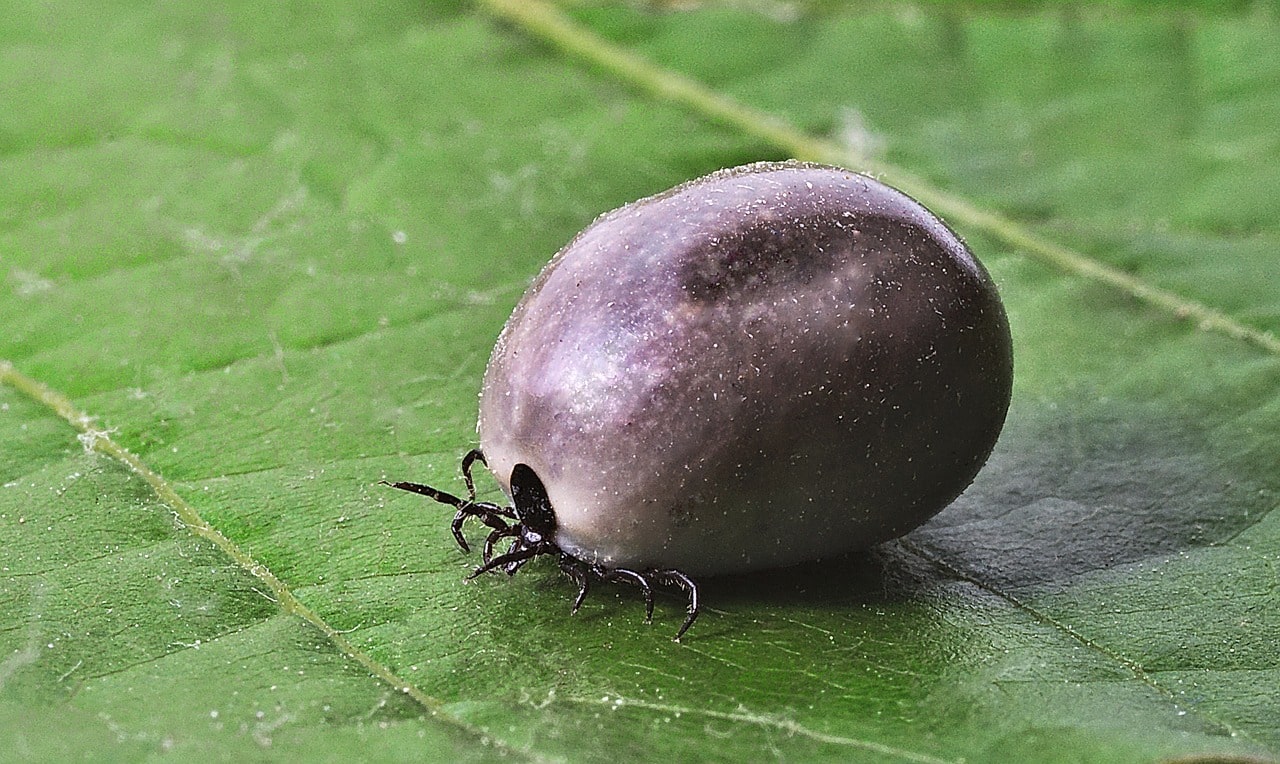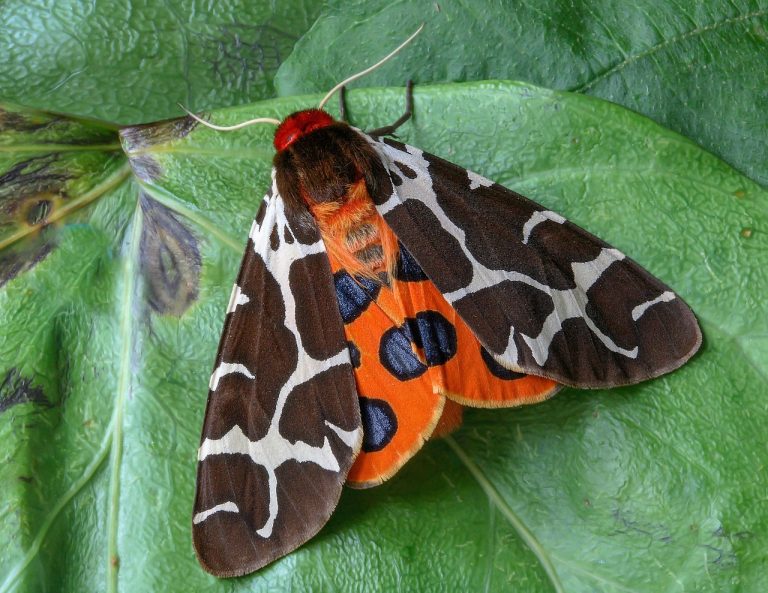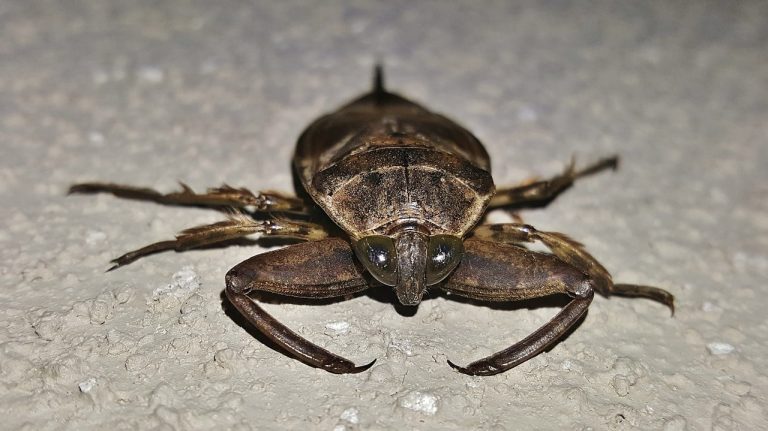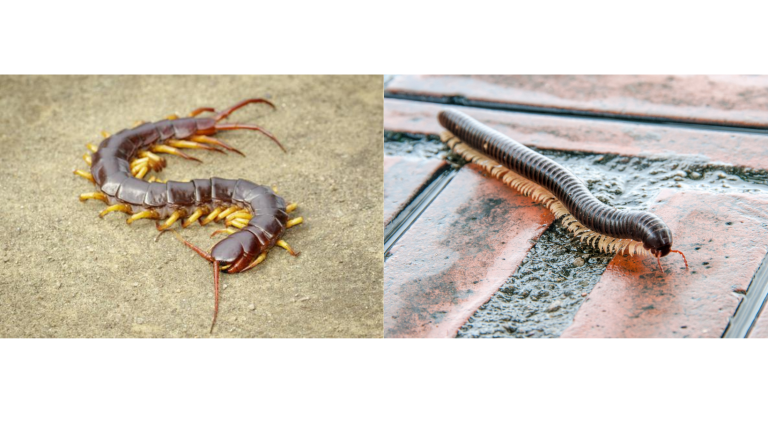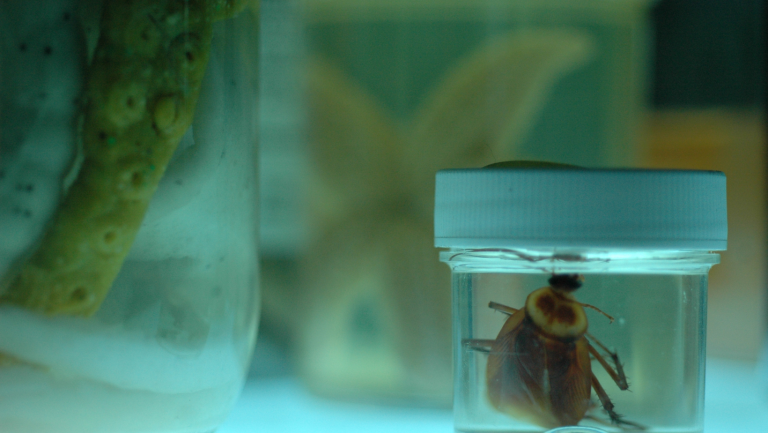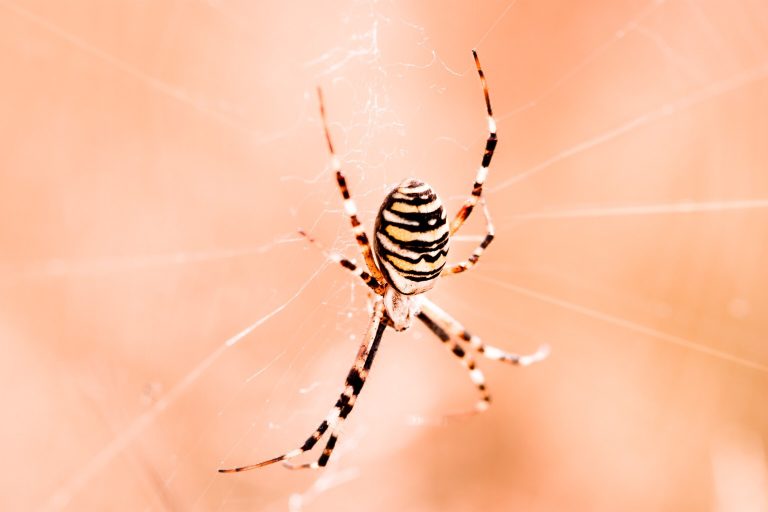How to Get Rid of Ticks? Natural, Herbal, and Chemical Treatment
Ticks (suborder Ixodida) are parasitic arachnids that are part of the superorder Parasitiformes. They constitute the subclass Acari along with the mites. Ticks are external parasites feeding on the blood of mammals, birds, reptiles, and amphibians. Ticks are estimated to be originated during the Late Cretaceous period.
Ticks belong to three major families, the Ixodidae or hard ticks, the Argasidae or soft ticks, and Nuttalliellidae, a monotypic family. Ticks have four stages in their life cycle – egg, larva, nymph, and adult. There are about 700 hard ticks and 200 soft ticks, though only a few are known to bite and transmit disease to humans.
Types of Ticks
American Dog Tick (Dermacentor Variabilis)
They have a dark brown body. Females have an off-white shield, while adult males look more mottled. Biting risk is from females during the spring and summer months.
This species is a primary vector of the bacteria that cause Rocky Mountain spotted fever (Rickettsia rickettsii). It also transmits Tularemia (Franscisella tularensis), Ehrlichia, Anaplasma, and tick paralysis.
This tick is seen in the east of the Rocky Mountains, throughout the East and Gulf Coast, along the Pacific Coast, into Canada, and parts of Alaska.
Blacklegged ‘Deer’ Tick
This tick has a reddish-orange body, a black shield, and dark black legs.
They transmit Borrelia Burgdofer (the agent of Lyme disease), Borrelia mayonii (which causes a Lyme-like illness), Borrelia miyamotoi and Borrelia hermsii (that both cause relapsing fever Borreliosis), Ehrlichia muris (ehrlichiosis), Anaplasma phagocytophilum (anaplasmosis), Babesia microti (babesiosis), multiple species of Rickettsia, deer tick virus, and Powassan virus. This tick also might be transmitting Bartonella to humans.
They are found throughout the eastern US, large areas in the north and central US, and the South.
Brown Dog Tick
It is reddish-brown with a narrow shape in comparison to other ticks.
All stages of this tick transmit Rocky Mountain spotted fever (Rickettsia rickettsia), Q fever, and other rickettsioses to humans. They also transmit several diseases specific to dogs. Primarily, these ticks are found in and around homes with dogs.
They can spend their entire life cycle indoors.
Groundhog Tick
The Groundhog tick, also called woodchuck tick, has a light brown or blond color.
They are primary vectors of Powassan virus disease. They are found throughout the eastern half of the US.
All life stages of this tick feed on warm-blooded animals, including groundhogs, skunks, squirrels, raccoons, foxes, weasels, and occasionally humans and domestic animals.
Lone Star Tick
This tick is reddish-brown, with the female having a white dot or ‘lone star’ on her back.
The nymphal and adult ticks can transmit human monocytotropic ehrlichiosis (HME), Ehrlichiosis (Ehrlichia chaffeensis, Ehrlichia ewingii, and Panola Mountain Ehrlichia), Rickettsiosis, Rocky Mountain spotted fever (RMSF), Tularemia, (Francisella tularensis), Heartland virus, Bourbon virus, Q fever, and tick paralysis, as well as Borrelia lonestari, which causes southern tick-associated rash illness ‘stari’.
The above mentioned are some of the types which are described briefly.
How to Get Rid of Indoor Ticks?
Ticks carry a lot of harmful blood-borne diseases like Lyme disease and some transferred diseases can be deadly. You must know some useful methods to get rid of ticks indoors to avoid heavy infestation. There are two types of ticks – hard-shell and soft-shell. It is essential to know about both to protect your house from them.
The soft-shell types are not aggressive and prefer to stay with a single host and feed in brief sessions at night (for less than an hour). These are more like bed bugs.
Hard-shell ticks move from host to host for a long and satisfying meal lasting a few days or up to a week. They do this through a method called ‘questing’ which is common to their web-building spider activities.
Natural Home Remedies to Get Rid of Indoor Ticks
Ticks are not known for infesting the inside of the house but can latch on to your pets as they can hide and ride inside. They can hide anywhere in your house and if you find one, then it’s time to take action to eradicate them.
Try these natural and effective ways to keep the ticks away without using harsh chemicals.
- Cedar Oil spray – Cedar oil is a non-toxic, natural tick and insect repellent. It can be sprayed directly on clothing and skin as it is safe for use on humans and pets. Cedar oil repels ticks and other insects and even kills them too.
- Homemade tick and insect repellent – Try the following simple recipe and apply to exposed skin –
- 9 drops of Citronella essential oil
- 6 drops of Tea Tree essential oil
- 6 drops of Peppermint essential oil
- 1 tablespoon of almond oil or jojoba oil
- Eucalyptus Oil – Eucalyptus oil is an effective tick repeller and killer.
Mix 4 ounces of purified or distilled water to a small spray bottle along with 20 drops of eucalyptus essential oil. Shake before using and spray on skin, pant cuffs, and shoes. It is safe to use on dogs too.
- Neem Oil – It is also used as a natural remedy to repel and remove ticks.
Rub several drops of oil on your exposed skin. It can also be used in combination with almond oil or other light carrier oil. it is safe for dogs in diluted form. If you want to remove a tick, apply a drop or two of neem oil directly on the tick and it will extract itself quickly.
- Apple Cider Vinegar – This is a wonderful natural remedy used to repel almost all the insects and here too, it works well.
In 2 cups of water, add 4 tablespoons of apple cider vinegar, and 2 tablespoons of organic neem oil. This solution can be sprayed on clothing and exposed skin, or even on furniture.
- Aromatherapy Essential Oils –Ticks, like most of the insects hate orange, lemon, cinnamon, rose germanium, lavender, and peppermint. So, they will keep themselves away from whatever contains this smell. Any of these or combinations can be sprayed to repel the ticks.
Plus, this natural tick repellent is great to smell too.
- Garlic – Apart from its excellent health benefits, eating garlic will result in the reduction of tick-bite risk. The garlic tends to excrete the body smell which ticks hate so, they will keep away from you.
- Cloves – Cloves have anti-inflammatory and anti-bacterial properties that help in killing ticks.
To prepare clove spray, mix 3 camphor crystals and 3 dried cloves in 1-liter ethanol/alcohol until they dissolve completely. Add 1 cup of apple cider vinegar to it. This solution, you can spray on your pet’s fur and rinse it after 2 hours.
- Mint Leaves – Mint apart from its nice smell, works as a natural tick repellent. Squeeze 2 lemons and mix it with 10 teaspoons of apple cedar vinegar in warm water. Soak 10 to 15 mint leaves in the mixture and leave it to sit overnight.
Spray it on the affected area or exposed skin.
- Tobacco – This perennial herb containing nicotine is also a potent insecticide. Leaves or a water extract can be rubbed on the skin to get rid of ticks naturally.
The juice of the tobacco leaves work well as tick repellent when rubbed on the body.
- Wash clothes in hot water – Ticks attach themselves to dirty clothes or bed linens.
Wash the affected clothes with the hottest possible water suited to your fabric. The clothes suspected to have ticks attached must be kept and washed separately as mixing with good clothes may contaminate the whole clothing.
- Keep the house clean – Cleaning your home thoroughly is also essential. Clean shelves, unused desk drawers, and corners, etc. Mop and vacuum the entire floor properly.
Vacuuming will be very effective in the process of tick removal and it will also need less effort.
- Use natural pesticide dust – To kills any remaining ticks or their eggs, you need to use pesticide. Once you clean the house, you can use the readymade powder dust to spread in your house to get the after effect.
This will kill existing remaining ticks as well as prevent further to come into your house.
- Treat indoor pets – Pets will carry ticks along with them indoors. Every time your pet is outside, you need to ensure that you are spraying pet-safe tick repellent on them and inspect or wash them before entering the house.
This will help you to a large extent to keep the ticks out of the house.
- Call Exterminator – Taking the help of professionals make sense if you feel that you cannot control ticks beyond a specific limit. The reoccurrence of ticks happen despite your efforts is the indication that it’s time to call them to tackle the problem.
How to Get Rid of Ticks with Pets in House?
In the case of ticks, your pets might be the carrier of them in your house as ticks attach themselves to their fur easily and enter your home without any indication. Not only that, the pets may suffer from blood-borne diseases due to the ticks. Here, treating the pets to protect them from the ticks is more important than protecting themselves.
Ticks are equally dangerous compared to the side effect of pesticides on pets we use to treat ticks. Therefore, it becomes essential to treat pets along with your home.
There are some remedies that can assure you that your pets are safe from ticks as well as from ingredients used to get rid of ticks from the house.
- Lemon – You can use lemon solution during the bathing of your pet. You can take 8 cups of water, 2 cups of lemon juice, and a quarter cup of any natural shampoo.
Mix this with the bathing water of your pet to get the benefit of properties.
- Neem Leaves/Oil – Keeps ticks away with its antibacterial and antiseptic properties. Diluted neem oil is to be applied on the affected area of your pet or rub against their body as a precaution.
- Cloves – Kills ticks with anti-bacterial and anti-inflammatory properties. Dried cloves with camphor mixed with alcohol can give an effective spray that is also pet-safe.
- Bay Leaves – Crushed or ground bay leaves can be rubbed all over your pet’s body. You can also put bay leaves in their bedding to give extra protection.
These simple and easy methods can keep your pets away from ticks as well as from chemical side effects.
Chemical Treatment to Get Rid of Indoor Ticks
When there are more ticks observed, you may want to eradicate them using more effective methods because you don’t want them to reappear in your house too.
You can get the following treatment done for your house –
- Residual Insecticides – You can use FenvaStar EcoCap, Bifen IT, or Precor2000 Plus. First month, spray twice for two weeks, then once a month for maintenance.
You have to mix 2 oz of FenvaStar EcoCap in one gallon of water.
- Insect Growth Regulators – Tekko Pro IGR consists of two active ingredients that prevent the immature tick from developing. It reduces the tick population. It works on fleas as well.
Mix 1 oz of Tekko Pro with any of the FenvaStar EcoCap or Bifen It to kill the adult ticks instantly.
- Quick-kill aerosols – Non-residual, contact space sprays that contain Pyrethrins such as PT 565 may be useful to supplement the residual sprays. It is a contact killer and can be used on daily basis.
- Insecticide dusts– Drione Dust (for pet bedding) or D-Fense Dust in cracks and crevices, behind baseboards, windows, door frames, and other similar structures.
- Tick repellents– DEET and Permethrin can be used as body and clothing spray to avoid tick attachment. You can use Ben’s 100 DEET, Ben’s 30 DEET, and Ben’s Clothing and Gear.
- Fipronil – Martin’s Flee Plus IGR for Dogs or Flee Plus IGR for Cats. Can be the other option to take care of your pets.
How to Get Rid of Outdoor Ticks?
Preventing the ticks outside and leaving no chance to them to enter the house is the best way to avoid tick infestation. The more you work outside on them, the chances of reduction are higher.
You can put 70-30% effort to get rid of ticks outdoor-indoor.
Natural Home Remedies to Get Rid of Outdoor Ticks
With several methods, you can ensure to keep them away from you and your pets. Follow the below things and you might get good results.
If you can identify the habitats of hard and soft ticks you can differentiate the methods
- Vegetation – A major contributor to tick hideout is heavy vegetation. The ticks lay eggs on the ground at a dense place where no one can find them. The tall grass is the best harbourage for ticks.
- Pet movement – When you suspect the tick’s presence, you need to be very careful about your pet movement. Pets are prone to carry the ticks inside along with them while they play or walk outdoors.
- Appropriate clothing – Wear long-sleeved shirts, and long trousers with tight-fitting cuffs to avoid tick bites.
- Protect pets – Protect your pets with ‘herbal pet collars’ or least-toxic products to protect dogs and cats.
- Granules – Run ‘EcoSmart Insect Killer Granules’ around, foundations, lawns, and landscapes to eliminate or repel the ticks.
- Diatomaceous Earth – Apply food-grade diatomaceous earth powder which is made up of tiny fossilized aquatic organisms.
- Pet-bedding and Kennels – With plant-based formulas specially designed to keep the ticks away. They are safe to use around homes, children, and pets.
- Organic neem oil – Broad-spectrum organic neem oil stops the growth and development of pests and has repellent and anti-feedant properties. It is also non-toxic to beneficial insects like honey bees.
- Botanical Insecticide – If pest populations become heavy, spot and treat the problem areas with a fast-acting botanical insecticide such as ‘Safer Mosquito & Tick Killer’.
This natural spray persists for about two weeks and has less toxicity than commercial chemical pesticides.
- Avoid overwatering – Ticks prefer moist environments, so, overwatering the plants and lawn will give chance to them to enter your area. Work out well on the drainage system and water the lawn or plants with only the required water.
- Keep mice away – Where mice are there, they will carry ticks along with them. Keeping the mice out of your proximity is the best solution to control tick invasion. Garbage can attract rodents or mice and they are carriers of ticks, so, your surrounding must be free of garbage.
- Natural repellents – Use natural tick repellent such as neem spray, cedar oil, etc to get rid of ticks from outdoors. One can use permethrin-treated cotton balls which on permeation to ticks’ skin will kill them.
- Citrus-based repellent – Ticks avoid all types of citrus plants.
To prepare citrus-based repellent, boil 2 cups of water, and add 2 chopped lemons, limes, oranges, or grapefruit. Let it boil for a minute and let it simmer for an hour. Strain the fruit, let it cool, pour it into a sprayer, and use it as a natural citrus-based spray to protect from ticks.
Chemical Treatment to Get Rid of Outdoor Ticks
If you want to keep the ticks away from you and your pets, there are some precautionary measures to be taken with proper study.
There are some equipment (Pet Collar) and some chemicals you can use to prevent or kill the ticks while you are outdoors.
- Bifen IT – Mix ½ -2 ounces per gallon; use 1-3 gallons per 1000 sq ft.
- Permethrin SFR – Mix 0.5 oz to 0.8 oz to 4 gallons of water per 1,000 sq ft.
- Fipronil – Flee Trigger Spray and Martin’s Flee aerosol have Fipronil 0.29% in spray forms.
- Permethrin 10% – Martin’s 10% Permethrin Insecticide may be used as dog dip; one pint will yield 25 gallons as a dip. It may not be used for cats. It controls livestock, flies as well as ticks.
- Pyrethrins – Pyrethrin is a contact, non-residual active ingredient. Pyrethrin is an organic product that comes from Chrysantheum flowers.
How to Get Rid of Ticks in Your Yard?
To avoid tick infestation in your yard, you will need to do the following –
Apply pesticides outdoors to control ticks – The use of pesticides can reduce the number of ticks from your yard, though it is not the only way to reduce infestation.
- Choose the best time to apply the pesticide in the yard with the help of local health or agricultural officials.
- The best type of pesticide is spray.
- Rules and regulations regarding pesticide application should be taken into consideration.
Create a tick-safe zone to reduce black-legged ticks in the yard –
- Remove leaf litter.
- Clear tall grasses and brush around homes and at the edge of lawns.
- Place a 3-feet barrier of wood chips or gravel between lawns and wooded area.
- Mow the lawn frequently.
- Stack wood in a dry area.
- Keep playground equipment, decks, and patios away from yard edges and trees.
- Discourage unwelcome animals.
- Remove old furniture, mattresses, or trash from the yard.
How to Get Rid of Ticks from Trees?
If you wish that tick infestation should not spread in your house, then you need to take some strong precautionary steps to avoid them from your garden tress first. Ticks have the perfect environment to grow in your garden grass or on your trees.
The eggs are so small that it is nearly impossible to identify them with the naked eye and destroy them. You need the necessary knowledge about it.
Ways to Get Rid of Ticks from the Trees
Here we can see some corrective actions as precautionary steps we can take to get rid of ticks from trees –
- Check tick hiding places – Fences, retaining walls, and exterior walls of outbuildings, such as sheds, are favorite hideouts of ticks. These places must be regularly inspected to see whether any tick activity has started.
- Clear out – Ticks survive in moist, shady areas and tend to die in sunny, dry areas. So, keep them away from such an environment. Place compost piles away from outdoor play areas, decks, and other outdoor living spaces.
Also, locate swing sets, sandboxes, and anywhere else your family gathers. Provide a wide barrier in the form of a patch of chips or gravels that will prevent ticks from jumping from wood to your lawn.
- Deer deterrent plants – Ticks can travel with deer to your garden. You can place the plants or shrubs that don’t attract deer. You can put barriers such as fences and you can even place deer repellent on the border too.
- Clean debris – Piles of grass, leaves, and brush build-up should not be allowed. Timely cleaning is essential to avoid attracting ticks as those are the best places for them to hide.
Mow the grass regularly to avoid the possibility of giving shady shelter for small pests.
- Protect your pets – Pets are prone to tick-bites and tick-diseases and they could also carry ticks in your house. Provide tick collars to your cats or dogs and ensure you spray them.
Take recommendation of pest products from your vet doctor.
- Get professional help – For chronic tick problems, get the help of professionals. They use spray or tick tubes that are bio-degradable, to kill ticks.
How to Find Tick Nests?
Ticks live on all continents. They can survive most environmental conditions through natural adaptation and can feast upon anything to survive. You won’t come across any tick eggs or nests because of their size. The most commonplace of their eggs or nest in on ground level, encapsulated in the soft surrounding grass.
Despite this, they relocate themselves indoors and flourish and leads to an infestation. Whenever you come back from a walk with your dog, you must inspect whether he is carrying any tick from outside. The other notable things where you have to take precautions are –
- Burgundy-like color patches.
- Caviar-like, bundling of eggs.
- Humid and moist-like patches.
- Found on floor level in a non-domesticated environment.
Ticks are not easy to dispose of and their nests are too. Hence, use the divide and destroy method –
- Do not touch.
- Remove nest from environment with tools and dispose the nest and clean tool with alcohol.
- Submerge nest in alcohol.
Take the following steps to evade ticks –
- Avoid walking through heavy vegetation.
- Wear long-sleeved clothing, avoid shorts and wear suitable shoes.
- Spray clothing with tick repellent.
- Use a baiting system in your garden around vegetation.
How to Treat Tick Bites?
Different ticks spread different diseases on biting. The most seen are the Rocky Mountain spotted fever and Lyme disease along with Colorado tick fever, tularemia, and ehrlichiosis.
The most important thing on tick bite to do is to remove it from your body. With a set of tweezers, you can remove it by the following steps –
- Hold the tick as near as possible to your skin.
- Pull straight up with steady pressure without bending or twisting tick.
- Ensure no body part is left on your skin.
- Clean the bite with soap and water.
- Dip the tick in a container having rubbing alcohol to make sure it is dead.
Visit the doctor as soon as possible to check whether you need any further treatment based on the type of tick bit you.
FAQs
How to Get Rid of Ticks under Pavers?
Keeping your lawn vegetation to the bare minimum level will eliminate the possibility of ticks under the paver area. Heavily grown vegetation and long grass with a moist atmosphere are the best places for ticks to lay eggs and grow.
How to Get Rid of Ticks around Pool?
Keeping the 3-feet width of chips or gravel between the lawn and the poolside is the way to avoid the ticks around the pool.
Can a Tick Be Killed by Crushing It?
If you are infected and you crush-kill the tick, you could most probably become exposed to the pathogen infecting the tick.
Hence, crush-killing is not advised.
How to Get Rid of Giant Ticks?
If the tick has stuck to your skin, you need to use tweezers to grasp the tick as close as possible to your skin and pull it straight.
If you want to protect yourself from it, then apply some essential oil like mint or eucalyptus on your exposed part of the body before moving outdoors.
How to Get Rid of Ticks under Carpet?
Spread a generous amount of kosher salt from one end to the other end. Allow it to remain overnight and vacuum the next day to remove any ticks on or under it.
How Vegans Get Rid of Ticks?
Avoid the ticks by minimum exposure of skin where the potential infestation is doubted. Spreading the natural tick repellent around the house and outside to keep ticks at bay.
What are the Symptoms of Tick-Bite Related Diseases?
The general symptoms of tick-bite-related diseases are headache, muscle and joint pain, fever, fatigue, or weakness of the muscles of the face, or sometimes skin rash too.

